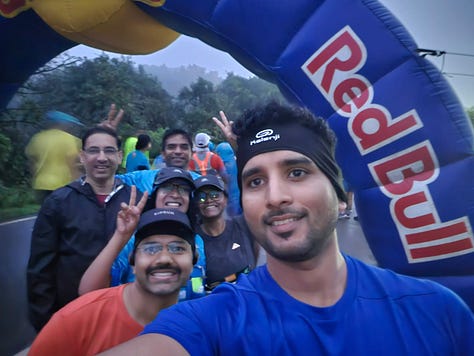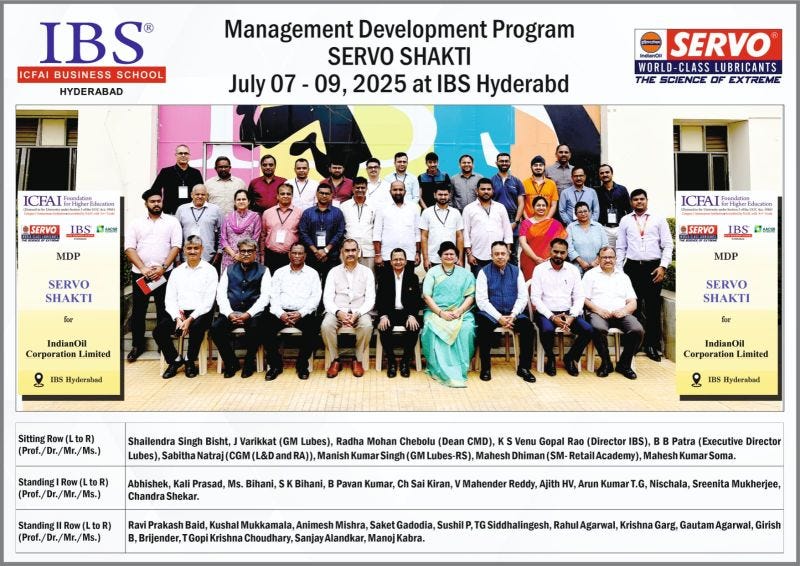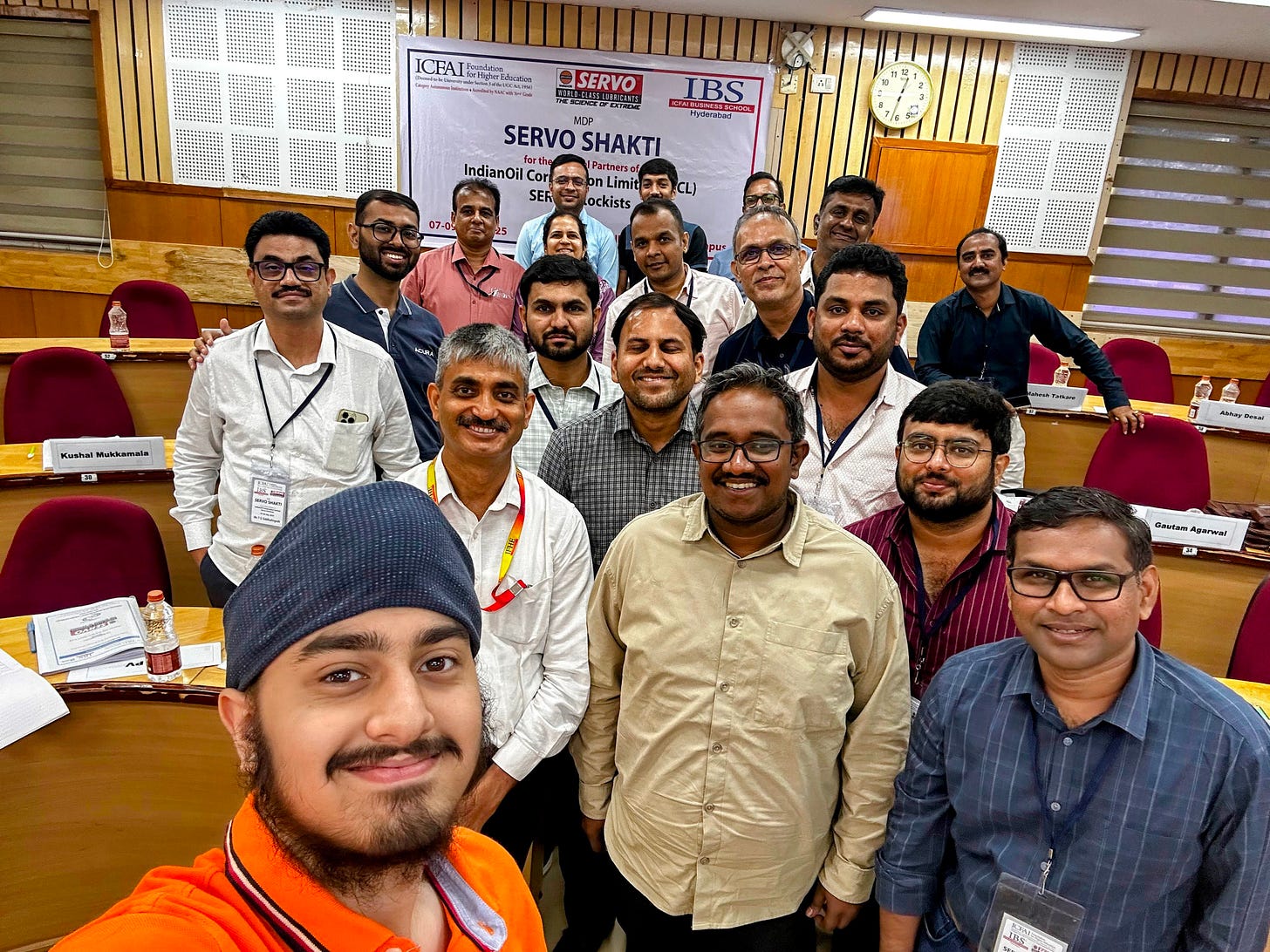They say machines don’t sleep. They don’t forget. They don’t get tired or bored or burnt out. Increasingly, they’re being programmed to smile, pause, and even say “um” mid-sentence—because someone decided that sounding more human might feel more trustworthy. And yet, every time we cross into that uncanny valley of algorithmic emotion, we’re reminded of what the machine still lacks: vulnerability, choice, doubt, love.
On Sunday, my own superwoman Archana ran along with many other PCR members through fog and rain up a 35-kilometre route, undeterred by the soaked terrain. I also watched Superman admit, “I love. I get scared. But that is being human. And that’s my greatest strength.” Between those two moments—one real, one fictional—lies something no large language model or AI interviewer can emulate: the messy, resilient poetry of human experience.
In boardrooms and cloud servers, talent is being reframed as code and cost. But on trails, in theatres, and in our quiet resolve to care despite the odds, we’re writing a different story—one not of flawless performance, but of flawed, courageous participation.
That, perhaps, is our true superpower. Not being faster, smarter, or more scalable—but being human.
DTW
During the Week, Recruit Holdings—the Japanese parent of Indeed and Glassdoor—announced the layoff of 1,300 employees, around 6% of its HR tech workforce, in its third major job cut since 2023. The move signals a bold shift toward AI-powered hiring, with job losses spanning research, growth, and people functions, primarily in the US. As Glassdoor’s operations merge into Indeed, top leadership exits—including both CEOs—underscore the scale of transformation underway. This restructuring is not just about cost-cutting—it marks a strategic pivot to reimagine the hiring experience around autonomous systems, personalised algorithms, and efficiency-driven digital platforms.
Some of the proposed changes may be result of growth of Agentic AI. We have seen that Agentic AI—autonomous systems capable of taking goal-driven actions without constant human oversight—is rapidly transforming core business functions across industries. At the Digital Transformation Colloquium (DTC) held on 7th July 2025, Amrita Chatterjee, Lead Solution Engineer at Salesforce, delivered a compelling talk on “Digital Transformation of B2B CX: A Playbook for Marketers,”highlighting the growing role of digital technologies in reshaping B2B customer experience. General consensus is now emerging as to how Agentic AI is enabling marketers to move beyond static segmentation towards real-time, account-level personalisation.
From intelligent lead qualification and intent prediction to dynamic content delivery and post-sales support, AI agents are helping B2B firms orchestrate complex, high-value customer journeys with precision and scale. Key audience takeaway was that in the B2B space, Agentic AI is not merely a tool for operational efficiency but a strategic enabler for building trust, improving CX, and accelerating revenue impact.
In the HR function specifically, agentic AI is reshaping the hiring funnel: from sourcing and pre-screening to interviews and onboarding, often replacing first-level human interaction with scalable, conversational intelligence. As businesses seek efficiency and personalisation at scale, agent AI is emerging as both a workforce multiplier and a strategic differentiator.
These developments in AI-led HR raise bigger questions: Is this transformation making hiring more fair and scalable, or just more transactional? Are we optimising efficiency at the cost of empathy? And are today’s job seekers unwitting participants in a grand A/B test to train the very systems evaluating them?
A new generation of startups is reimagining hiring through the lens of agentic AI, with Ribbon AI, Apriora, and Talently leading the charge. These companies have emerged at a moment of inflection for the HR function—when traditional processes struggle under the weight of AI-generated job applications, and employers are under pressure to scale candidate evaluation while keeping costs down. What distinguishes these players is their use of autonomous AI interviewers—agents that can engage candidates in real-time conversations, tailor questions based on the job description, and provide outputs that can be reviewed later by human recruiters. Unlike static video assessments or resume parsers, these systems simulate dynamic interviews while capturing both structured and unstructured data points about a candidate’s experience, thinking, and communication.
Their rise is being fuelled by two converging trends. First, the explosion of AI-generated résumés and cover letters has created a glut of applications, many of which are indistinguishable at surface level. Second, HR teams—especially in startups, non-profits, and fast-scaling firms—are struggling with the labour intensity of early-stage screening, often receiving hundreds of applicants per role.
Agent AI platforms offer a compelling solution. By automating the first layer of interaction, they allow firms to screen 2x to 3x more candidates without adding headcount. For instance, Propel Impact, a Canadian non-profit, used Ribbon AI to screen over 500 applicants, up from just 150 the previous year—enabling both deeper reach and faster decisions. Moreover, these tools offer asynchronous coordination, letting candidates interview at their convenience and allowing hiring teams to review transcripts and video snippets at scale.
The result is not just speed or efficiency but personalisation at scale—AI agents that can tailor interviews to roles in software engineering, marketing, finance, or community engagement, asking nuanced follow-up questions that mimic human curiosity. But AI also brings compliance risk. Studies have shown that AI can amplify existing biases—penalising non-standard accents, low-light video, or unconventional career paths.
In sum, these startups are not just digitising recruitment—they're redefining its very architecture, offering a glimpse into a future where machines take over the drudgery, and humans focus on insight and judgment. The HR function itself is being digitised at the core. From LinkedIn’s AI-powered sourcing tools, to HireVue’s AI video assessments, to SAP SuccessFactors using AI to personalise career paths, AI is no longer on the fringes—it’s the operating system of modern HR.
Three trends stand out:
The AI-First Funnel: From sourcing to onboarding, the candidate journey is increasingly mediated by algorithms. Voice bots schedule interviews, AI agents conduct first rounds, and ML models evaluate video responses for tone, clarity, and even facial cues.
B2B HR Tech Consolidation: The Recruit-Glassdoor integration is just one signal. We can expect more mergersas platforms seek scale and unified data stacks. LinkedIn may deepen its integration with Microsoft Teams and Outlook. SAP or Workday might acquire smaller AI-driven candidate experience start-ups.
The Return of Human + AI: The backlash is building. Expect new models of hybrid hiring, where AI does the grunt work but humans handle the crucial conversations. Think of it as the co-pilot model—AI as augmentation, not replacement.
OTW
Over the Weekend, Archana and fellow runners from the Peerancheruvu Runners group (PCR), who travelled to the hills of Lonavala for the Varsha Marathon 2025 experienced Foggy trails, soaked shoes, and unstoppable spirit. With categories from 5K to 50K, the event drew runners of all ages into the swirling mist. The finish lines were less about speed and more about presence — of nature, effort, and community.



In the 35K category, Archana powered through lush terrain and dense fog, embodying the monsoon runner’s mindset: to embrace discomfort and find joy in motion.
Archana ran 35K through rain-soaked hills like a true Superwoman, while Aru and I decided to heroically battle popcorn and plot twists on the couch—our marathon was emotional, not physical! So later on Sunday evening , Aru and I curled into the quieter comfort of cinema — watching Superman. It’s easy to dismiss superhero films as spectacle, but one line from the climax stilled something within me:
“… always been wrong about me. I love. I get scared. But that is being human. And that’s my greatest strength.”
PCR’s presence at Lonavala, the shared strength of our running community, and even a superhero’s monologue remind us: we may be drenched, tired, even uncertain — but we’re still moving forward, together.
I Love You
Shailendra
PS-
At the SELL workshop for Indian Oil SERVO stockists, I had the opportunity to lead a session on Customer Relationship Management. We explored how stockists can move beyond transactional sales to build trust-based, long-term partnerships—with mechanics, fleet operators, and institutional clients.
Using real-world case studies from rural, urban, and metro markets, we discussed customer-centric selling, expectation management, and the power of feedback loops.
The participants were deeply engaged, sharing stories of challenge and adaptation. My goal was simple: to help them walk away with a few actionable ideas that can turn their customer base into a competitive advantage.









AI helps a lot when hiring for big roles in bulk, like for call centers or sales jobs. But for special jobs like firmware, robotics-RPA
or medical coding, it can cause more problems than it solves. Companies like VMware or Mercedes-Benz need very skilled people, but these experts don’t always write their resumes using the “right” keywords. So the AI misses them and they get rejected—not because they’re bad, but because the AI didn’t understand their potential. Studies show that about 38% of such good candidates are filtered out too early.
Also, using these fancy AI hiring tools is very expensive. Big companies might afford them, but mid-sized companies and staffing agencies—who actually hire most of the special roles—can’t spend so much. So AI becomes a luxury, not a smart solution. That’s why top companies like Accenture and HP still trust human recruiters who can understand people’s stories, skills, and personalities—things AI can’t do.
Even worse, overusing AI in hiring can reduce diversity. It may reject people because they talk differently, studied in non-famous colleges, or had gaps in work. And after all this, many companies still remove staff for cost-cutting, only to spend more money on AI tools again. Fewer employees end up doing more work, leading to stress, burnout, and a bad work culture.
AI should help people—not replace them. We need both smart tech and smarter humans to build great teams.
Great insights on Agentic AI